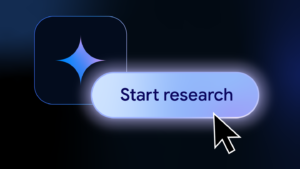DeepMind Unveils ‘SALT’: An Efficient Machine Learning Method for Training High-Performing Large Language Models with SLMs

Google DeepMind’s SALT: Enhancing Language Model Training
Google DeepMind has recently unveiled a new machine learning technique known as SALT, which stands for Scalable Adaptive Language Training. This innovative approach focuses on improving the efficiency of training large language models (LLMs) using Synchronous Learning Methods (SLMs). The objective of SALT is to create high-performing language models that require less computational power and time compared to traditional methods.
Understanding the Need for Efficient Training
With the rapid advancements in artificial intelligence (AI) and natural language processing (NLP), training large language models has become increasingly resource-intensive. Traditional training methods typically require substantial computational resources, often running for days or even weeks. This not only raises costs but also contributes to a significant carbon footprint in the tech industry. There is therefore a pressing need for more efficient techniques that can streamline the training process without sacrificing the quality of the models.
What is SALT?
Key Features of SALT
Scalability: SALT is designed to accommodate a wide range of model sizes and architectures, from smaller models to the latest state-of-the-art LLMs. This flexibility makes it suitable for diverse applications.
Adaptability: The algorithm can adapt based on the resources available, optimizing the training process for various environments, whether on cloud platforms or local servers.
Efficiency: By leveraging SLMs, SALT can reduce the number of iterations needed to achieve high performance. This speeds up the overall training time without compromising the model’s output quality.
- Collaboration: SALT encourages collaborative training, where multiple models can be trained simultaneously. This not only speeds up the process but also allows the models to benefit from shared learning experiences.
How SALT Works
SALT employs several innovative techniques:
Gradient Accumulation: This method allows for collecting the gradients (the changes made during training) over multiple batches, enabling more efficient use of memory and computational resources.
Dynamic Learning Rate: The algorithm adjusts the learning rate automatically based on training progress, ensuring that the model learns optimally at all stages.
- Layer-wise Adaptation: Different layers of the model can be optimized independently, tailoring the training process to the specific needs of each layer.
Benefits of Implementing SALT
Cost Reduction
By minimizing the computational demands of training large language models, SALT can significantly reduce costs related to hardware and cloud services. This opens up opportunities for smaller organizations and research institutions with limited budgets to develop high-quality LLMs.
Environmental Impact
Enhanced efficiency means decreased energy consumption during training. As the tech industry increasingly focuses on sustainability, adopting SALT could drastically lower the carbon footprint associated with training large models.
Faster Deployment
The quicker training times that SALT offers can lead to faster product cycles. Organizations can deploy updated models in shorter timeframes, keeping pace with the fast-evolving landscape of AI and NLP.
Potential Applications
Business Solutions
Organizations can leverage SALT to improve customer service through chatbots or virtual assistants that understand and respond to inquiries more effectively.
Research
In academia, SALT can facilitate the development of language models tailored for specific research, enhancing data analysis and interpretation.
Content Creation
Writers and content creators can utilize SALT-enhanced models to generate high-quality, contextually aware text.
Language Translation
The improved performance can also play a significant role in refining machine translation systems, providing more accurate and nuanced translations across various languages.
Google DeepMind’s SALT presents a promising frontier in the realm of machine learning, particularly for training large language models. By prioritizing efficiency, adaptability, and collaboration, this approach can transform how organizations and researchers develop advanced language models, making high-quality AI accessible to a wider range of users while promoting sustainable practices within the tech industry.






